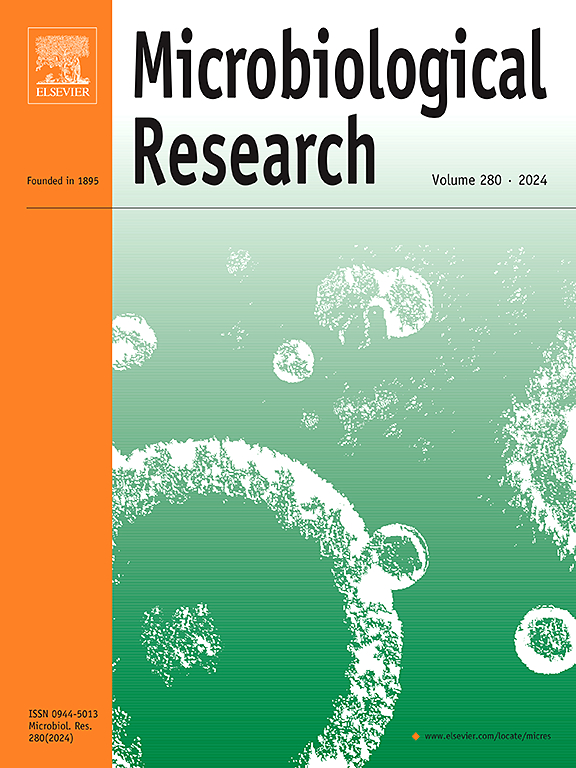dl -丙基甘氨酸逆转无乳链球菌的β -内酰胺耐药性
IF 6.9
1区 生物学
Q1 MICROBIOLOGY
引用次数: 0
摘要
无乳链球菌(GBS)是造成人类严重感染和畜牧业经济损失的主要病原体,β-内酰胺类药物仍然是畜牧业的一线治疗方法。然而,新出现的β-内酰胺耐药,包括世卫组织重点关注的青霉素耐药菌株,威胁到临床疗效,因此迫切需要破药佐剂。在这项研究中,我们证明了dl -丙氨酸甘氨酸(PAG)是一种半胱硫氨酸-γ-裂解酶抑制剂的抑制剂,它与β-内酰胺协同作用,逆转耐氨苄西林GBS (AR-GBS)和其他链球菌的耐药性,克服持久性和生物膜的耐受性。从机制上说,PAG通过双重途径增强抗生素的致死率:通过增强ROS产生的中央碳代谢来激活代谢,通过同时下调肽聚糖生物合成基因和上调荚膜多糖合成基因来重塑细胞包膜。这会破坏细胞壁结构,增加细胞膜通透性,加速抗生素的流入。虽然斑马鱼体内的治疗效果有限,但PAG代表了一种通过代谢和膜重塑克服β-内酰胺抗性的佐剂,为优化衍生物铺平了道路。本文章由计算机程序翻译,如有差异,请以英文原文为准。
DL-propargylglycine reverses beta-lactam resistance in Streptococcus agalactiae
Streptococcus agalactiae (GBS) is a major pathogen causing severe infections in human and economic loss in animal farming, where β-lactams remain first-line therapy. However, emerging β-lactam resistance, including WHO-priority penicillin-resistant strains, threatens clinical efficacy, creating an urgent need for resistance-breaking adjuvants. In this study, we demonstrate that DL-Propargylglycine (PAG), an inhibitor of cystathionine-γ-lyase inhibitor, exclusively synergizes with β-lactams to reverse resistance in ampicillin-resistant GBS (AR-GBS) and other streptococci, overcoming tolerance in persisters and biofilms. Mechanistically, PAG potentiates antibiotic lethality through dual pathways: metabolic activation via enhanced central carbon metabolism for ROS production and cell envelope remodeling via concurrent downregulation of peptidoglycan biosynthesis genes and upregulation of capsular polysaccharide synthesis. This disrupts cell wall architecture, increases membrane permeability and accelerates antibiotic influx. While in vivo therapeutic efficacy in zebrafish was limited, PAG represents an adjuvant that overcomes β-lactam resistance through metabolic and membrane remodeling, paving the way for optimized derivatives.
求助全文
通过发布文献求助,成功后即可免费获取论文全文。
去求助
来源期刊

Microbiological research
生物-微生物学
CiteScore
10.90
自引率
6.00%
发文量
249
审稿时长
29 days
期刊介绍:
Microbiological Research is devoted to publishing reports on prokaryotic and eukaryotic microorganisms such as yeasts, fungi, bacteria, archaea, and protozoa. Research on interactions between pathogenic microorganisms and their environment or hosts are also covered.
 求助内容:
求助内容: 应助结果提醒方式:
应助结果提醒方式:


